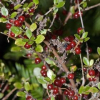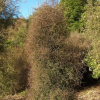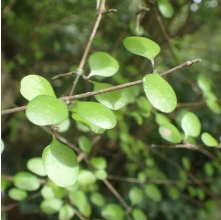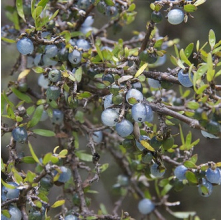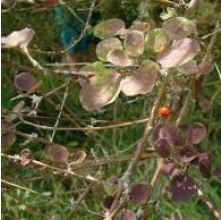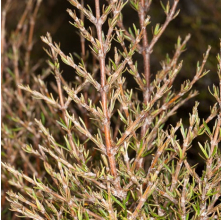Coprosma rhamnoides
(Red-fruited Coprosma)
Coprosma rhamnoides
(Red-fruited Coprosma)
Prices:
| Each | 20 or more | |
|---|---|---|
| 2.5L Pot | $9.50 | $9.00 |
Details:
| Type: | Shrub |
| Growth Rate: | Medium |
| Mature Height: | 2 m |
| Mature Width: | 1 m |
| Site Condition: | Exposed, Frost Tolerant, Heavy Soil, Sandy Soil, Waterways |
| Sun: | Full Sun |
| Drainage: | Dry, Moist |
| Frosts: | Half Hardy |
| Features: | Suitable for hedging or shelter. Attractive to birds, insects and lizards. Flower colour: Cream. Foliage colour: Green. Fruit colour: Dark Red. Native. Suitable restoration species. |
Coprosma rhamnoides is a dense tightly divaricating shrub. Tiny light green leaves. Stiff red/brown branches. Good for exposed, dry areas. N.Z. flora has a large number of shrubs with small tough leaves and wiry interlacing branches – divaricates. Some even have brown or grey new growth, giving a dead-like unattractive appearance. It is suggested that this may be a defensive growth mechanism to deter visits from browsing moa. Coprosma rhamnoides is a good example.
In October the plants develop small pale cream flowers which are dioecious (sexes separate). These flowers are wind pollinated. Drupes appear on the female plant in March-April small (3-4mm) red berries, turning dark red or black as they ripen.
Habitat: It is widespread in Canterbury and Westland in lowland to lower montane-scrubland and forest mostly as an understorey plant. It is less common higher in the montane zone.
Flowering: Spring [October - November]
Fruiting: Autumn [March - April]
Plant Calendar:
| Jan | Feb | Mar | Apr | May | Jun | Jul | Aug | Sep | Oct | Nov | Dec |
|---|---|---|---|---|---|---|---|---|---|---|---|
| FS | FS | FS |
| Flowering | Fruiting | Both | |
| Key |
| Fruit | Seed | Nectar | |
| Key | F | S | N |

